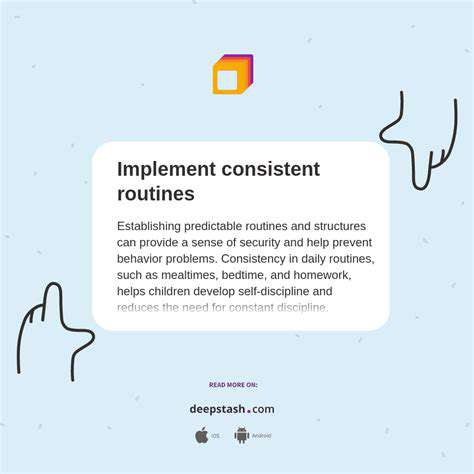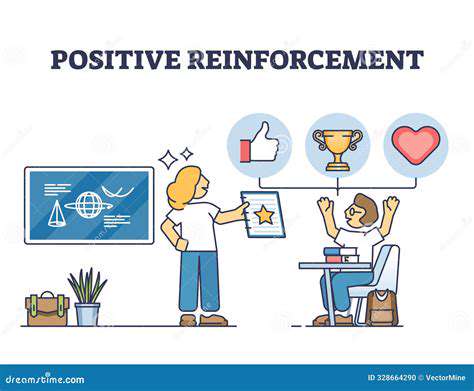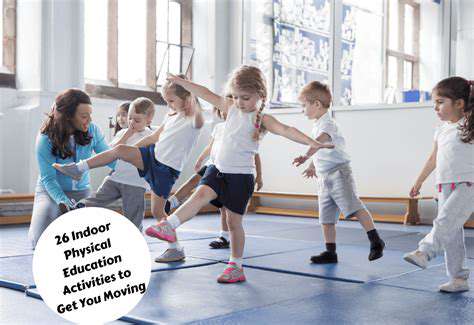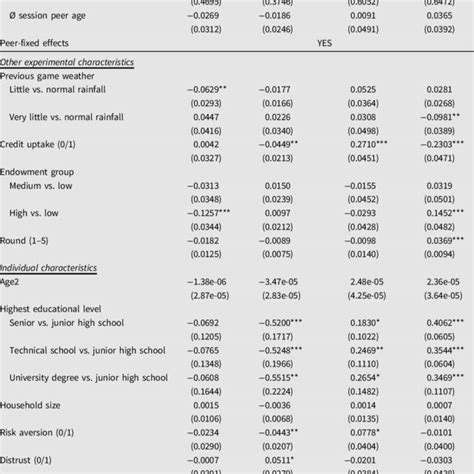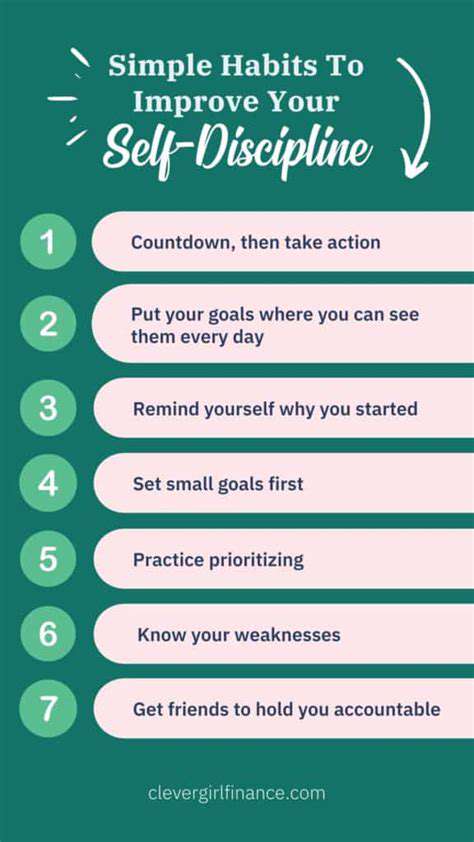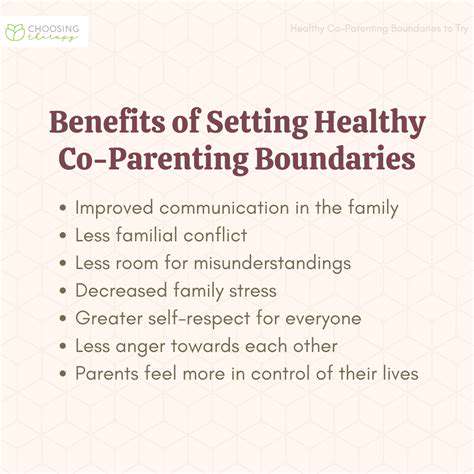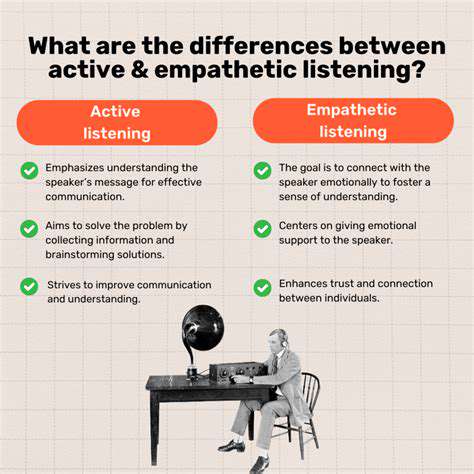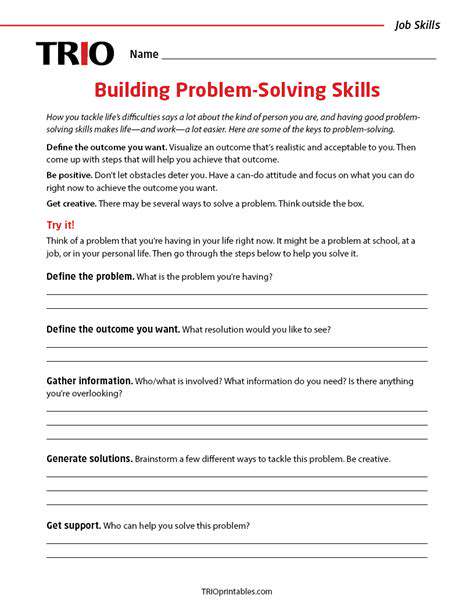Mindful Parenting: Bringing Presence to Your Everyday Interactions
The Essence of Mindful Parenting
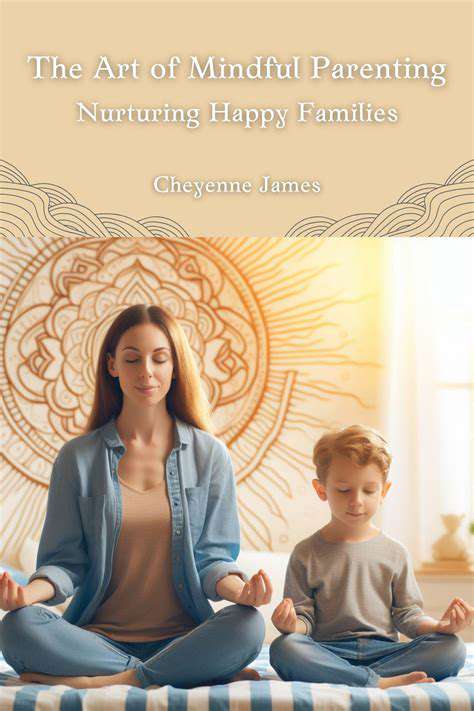
Cultivating Awareness
At its core, mindful parenting revolves around developing a heightened sense of awareness - not just of your child's actions, but of your own emotional landscape as well. This conscious approach involves recognizing how your reactions influence your child's behavior and emotional state. When you become attuned to these subtle dynamics, you unlock the potential for more meaningful and supportive interactions that strengthen your bond. It's a transformative process where you learn to identify your emotional triggers and develop strategies to address them constructively.
This practice of awareness extends to being fully engaged in the present moment with your child. Rather than dwelling on past mistakes or worrying about future challenges, mindful parents focus their attention on the here and now. This presence creates opportunities for deeper understanding and connection, establishing a foundation for healthy emotional development in both parent and child.
Choosing Response Over Reaction
One of the most valuable skills in mindful parenting is learning to pause before responding to challenging situations. This brief moment of reflection can transform knee-jerk reactions into thoughtful, considered responses that address the root of the behavior rather than just its surface manifestation. By taking this pause, parents create space to consider what their child might be communicating through their actions, leading to more effective and compassionate resolutions.
When faced with difficult moments, mindful parents consciously shift from automatic frustration to patient understanding. They recognize that their own emotional state influences the interaction and make deliberate choices to approach situations with calmness. This measured approach not only resolves conflicts more effectively but also models valuable emotional regulation skills for children to emulate.
Accepting the Imperfect Journey
Mindful parenting fundamentally rejects the notion of perfection, embracing instead the reality that parenting is an evolving practice. By acknowledging that mistakes and challenges are inevitable parts of the parenting journey, parents can approach difficult moments with greater self-compassion and flexibility. This realistic perspective reduces unnecessary pressure and creates space for growth and learning from each experience.
Understanding that parenting involves continuous learning helps parents maintain realistic expectations. This acceptance creates a more forgiving environment where both parent and child can navigate challenges without fear of judgment, fostering resilience and mutual understanding in the relationship.
Nurturing Emotional Intelligence
Through mindful parenting, children develop crucial skills for understanding and managing their emotions. Parents who demonstrate emotional awareness and healthy coping strategies provide their children with invaluable tools for navigating life's challenges. When children feel their emotions are acknowledged and validated, they develop a stronger foundation for emotional well-being that serves them throughout their lives.
Parents who practice mindfulness naturally teach their children effective strategies for handling stress and difficult emotions. These lessons in emotional regulation become lifelong assets, helping children mature into emotionally balanced adults capable of facing life's complexities with confidence and clarity.
Understanding Your Child's Perspective
Seeing Through a Child's Eyes
Children interpret their surroundings through a developmental lens that differs significantly from adult perception. Their emerging understanding of relationships, consequences, and emotional management requires patient guidance. Effective mindful parenting involves suspending adult assumptions to genuinely comprehend a child's viewpoint, especially when their behavior seems confusing. This demands active listening, thoughtful questioning, and a willingness to understand rather than judge.
Fostering Open Dialogue
Creating an environment where children feel safe expressing themselves is fundamental to mindful parenting. This goes beyond superficial conversation to establish genuine, judgment-free communication channels. It involves giving children undivided attention, acknowledging their feelings without immediate correction, and responding with empathy that validates their experience while gently guiding them.
Appreciating Developmental Stages
Each phase of childhood brings distinct developmental tasks and challenges. Recognizing these milestones - whether cognitive, emotional, or social - allows parents to adjust their expectations and responses appropriately. A preschooler's emotional outbursts differ developmentally from a preteen's mood swings, and mindful parenting adapts to these changing needs with understanding and appropriate support.
Practicing Patient Guidance
Children require time to process information, master new skills, and regulate their emotions. Mindful parenting embraces this developmental reality by offering consistent, patient support that respects each child's unique pace of growth. This approach creates a secure environment where children feel encouraged to explore, make mistakes, and learn without fear of harsh judgment or unrealistic expectations.
Being Present in Daily Moments
Mindfulness transforms ordinary interactions into opportunities for connection. Simple practices like pausing to breathe before responding to challenging behavior, or consciously focusing attention during routine activities, can significantly enhance the quality of parent-child interactions. This presence creates space for more thoughtful responses and deeper understanding in everyday moments.

Creating a Mindful Home Atmosphere

Designing for Calm
A mindful home environment prioritizes intentional design that promotes tranquility. Thoughtful consideration of lighting, color schemes, and spatial organization can significantly influence the emotional tone of your living spaces. These elements work together to create surroundings that naturally encourage relaxation and presence. The process of creating such an environment begins with assessing how your physical space affects your mental state and making adjustments accordingly.
Excess belongings can create visual and mental clutter that disrupts peace of mind. Regularly evaluating possessions and removing unnecessary items can dramatically improve the sense of spaciousness and calm in your home. This ongoing practice of simplification supports mindfulness by reducing distractions and creating physical clarity that mirrors mental clarity.
Bringing Nature Indoors
Natural elements have a profound effect on human psychology and well-being. Incorporating plants, maximizing natural light, and using organic materials can transform indoor spaces into soothing retreats that reconnect us with the natural world. These touches not only enhance aesthetic appeal but also contribute to reduced stress levels and improved mood for all household members.
The therapeutic benefits of nature are well-documented. By integrating natural elements into home design, you create an environment that supports emotional balance and mindfulness throughout daily life.
Intentional Organization
The process of decluttering extends beyond physical tidiness to represent a mindful examination of what truly adds value to your life. This thoughtful evaluation of possessions often leads to surprising insights about priorities and creates space - both literally and metaphorically - for what matters most. An organized environment naturally supports a more focused and present mindset, reducing the mental load of constant visual reminders of unfinished tasks or unnecessary items.
Curating Sensory Experiences
The sounds, scents, and textures in your home contribute significantly to its overall atmosphere. Soft background music, gentle lighting, and subtle aromas can work together to create an environment that naturally encourages relaxation and presence. These sensory elements, when chosen intentionally, can transform ordinary spaces into havens of tranquility that support mindful living.
Dedicated Spaces for Practice
Establishing specific areas for mindfulness practices reinforces their importance in daily life. Whether it's a meditation corner, yoga space, or simply a comfortable chair for quiet reflection, these designated areas serve as visual reminders to pause and reconnect with the present moment. The act of creating these spaces demonstrates a commitment to mindfulness that permeates throughout the home environment.
Encouraging Meaningful Connections
A truly mindful home facilitates quality interactions among family members. Thoughtfully arranged gathering spaces - whether around a dining table, in a cozy reading nook, or in a comfortable living area - invite conversation and shared experiences. These intentionally designed spaces become the backdrop for the meaningful connections that form the heart of family life. By considering how your home's layout and design can foster togetherness, you create an environment that nurtures relationships as well as individual well-being.

